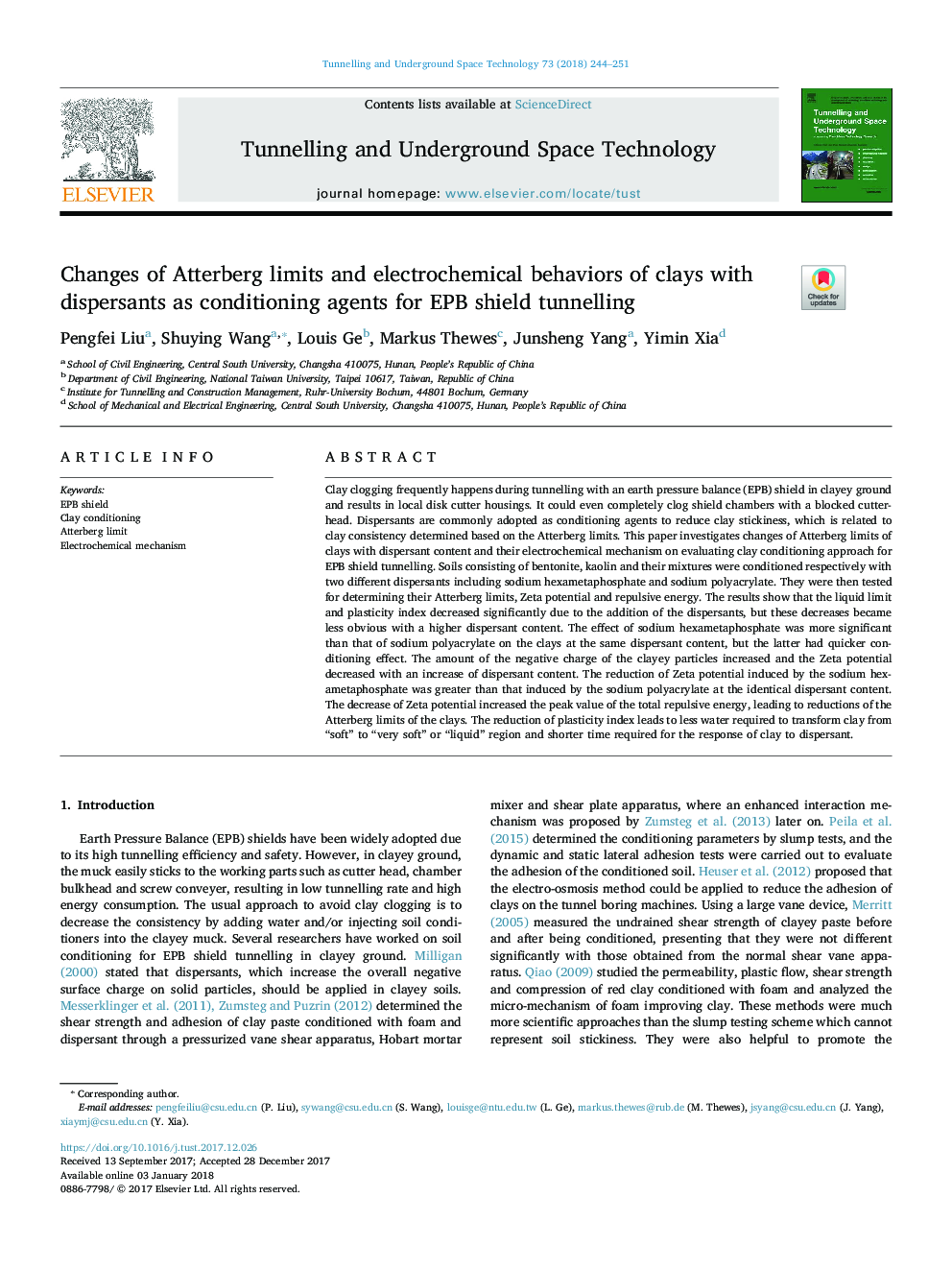| کد مقاله | کد نشریه | سال انتشار | مقاله انگلیسی | نسخه تمام متن |
|---|---|---|---|---|
| 6782816 | 1432273 | 2018 | 8 صفحه PDF | دانلود رایگان |
عنوان انگلیسی مقاله ISI
Changes of Atterberg limits and electrochemical behaviors of clays with dispersants as conditioning agents for EPB shield tunnelling
دانلود مقاله + سفارش ترجمه
دانلود مقاله ISI انگلیسی
رایگان برای ایرانیان
موضوعات مرتبط
مهندسی و علوم پایه
علوم زمین و سیارات
مهندسی ژئوتکنیک و زمین شناسی مهندسی
پیش نمایش صفحه اول مقاله

چکیده انگلیسی
Clay clogging frequently happens during tunnelling with an earth pressure balance (EPB) shield in clayey ground and results in local disk cutter housings. It could even completely clog shield chambers with a blocked cutterhead. Dispersants are commonly adopted as conditioning agents to reduce clay stickiness, which is related to clay consistency determined based on the Atterberg limits. This paper investigates changes of Atterberg limits of clays with dispersant content and their electrochemical mechanism on evaluating clay conditioning approach for EPB shield tunnelling. Soils consisting of bentonite, kaolin and their mixtures were conditioned respectively with two different dispersants including sodium hexametaphosphate and sodium polyacrylate. They were then tested for determining their Atterberg limits, Zeta potential and repulsive energy. The results show that the liquid limit and plasticity index decreased significantly due to the addition of the dispersants, but these decreases became less obvious with a higher dispersant content. The effect of sodium hexametaphosphate was more significant than that of sodium polyacrylate on the clays at the same dispersant content, but the latter had quicker conditioning effect. The amount of the negative charge of the clayey particles increased and the Zeta potential decreased with an increase of dispersant content. The reduction of Zeta potential induced by the sodium hexametaphosphate was greater than that induced by the sodium polyacrylate at the identical dispersant content. The decrease of Zeta potential increased the peak value of the total repulsive energy, leading to reductions of the Atterberg limits of the clays. The reduction of plasticity index leads to less water required to transform clay from “soft” to “very soft” or “liquid” region and shorter time required for the response of clay to dispersant.
ناشر
Database: Elsevier - ScienceDirect (ساینس دایرکت)
Journal: Tunnelling and Underground Space Technology - Volume 73, March 2018, Pages 244-251
Journal: Tunnelling and Underground Space Technology - Volume 73, March 2018, Pages 244-251
نویسندگان
Pengfei Liu, Shuying Wang, Louis Ge, Markus Thewes, Junsheng Yang, Yimin Xia,